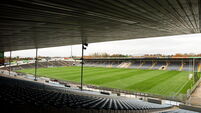Urban congestion: 66% of us live in cities and suburbs
The data from the Central Statistics Office shows that an average of 67 people live on every square kilometre. This compares to 62 per square kilometre in the previous census of 2006.
Almost 40% of the total urban population living in Ireland are in Dublin city and its suburbs, with 7% in Cork city and its suburbs.
The more densely populated areas in Ireland are predominantly located within the Greater Dublin Area, mainly Dublin City, Fingal, South Dublin, Dún Laoghaire-Rathdown, Meath, Kildare and Wicklow.
Commenting on the population concentration in Dublin, Chambers director of policy Aebhric McGibney said Ireland was following a global trend.
“There has been a global urban shift, cities have become the lightning rods of investment, the centres of innovations, the epicentre of employment and the engines of national economies. Cities are responsible for generating more than 80% of global GDP yet they occupy just 2% of the world’s land area. This is a trend that Ireland is following.”
Interestingly, just three of the 20 most densely populated areas in the State are outside the greater Dublin area. These are Cobh, Carrigaline and Carrigtwohill, all located on the periphery of Cork City and suburbs.
The study, the latest in a series of Census 2011 results, shows that Leitrim is the most rural county in the country with almost 90% of the county living in a rural setting. It is followed by Galway (74.4%), Roscommon (74%), Donegal (72.5%) and Mayo (71%).
Drogheda in Louth has remained the largest town in Ireland with a population of 38,578, followed by Dundalk and Swords.
Ennis, with a population of 25,360, remained the largest town in Munster, followed by Tralee and Clonmel. Sligo is the largest town in Connacht and Letterkenny in Ulster.
Cork has the largest amount of towns in any county with 111, while Longford has shown the biggest change in its rate of urbanisation since 2006 — from 26% to 33%.
There are now 849 cities and towns in Ireland, compared with 747 in 2006. The fastest growing towns in percentage terms were primarily within the 1,500-3,000 population range.
Saggart in South Dublin has shown was the fastest growing town between 2006 and 2011 when its population increased by almost 150% from 868 in 2006, to 2,144 in 2011.
Courtown Harbour in Wexford was another where the population more than doubled, increasing from 1,421 to 2,857, while Carrigtwohill showed a 64% increase in its population between 2006 and 2011.
Among the larger towns, Portlaoise grew the fastest with an increase of 38% from 14,613 to 20,145. Ashbourne, Co Meath (33%), Cavan (29%) and Balbriggan (28%) also experienced sizeable population gains.
One significant factor highlighted in the results is the huge rise in the number of people moving who rented their new home, increasing to 80% in Apr 2011
There was a marked decrease in the number of households who moved and owned their new home with a mortgage or loan.
This figure collapsed in the year leading up to census, from 48,761 in 2006 to just 14,707 in 2011, accounting for just 13% of moving households.











